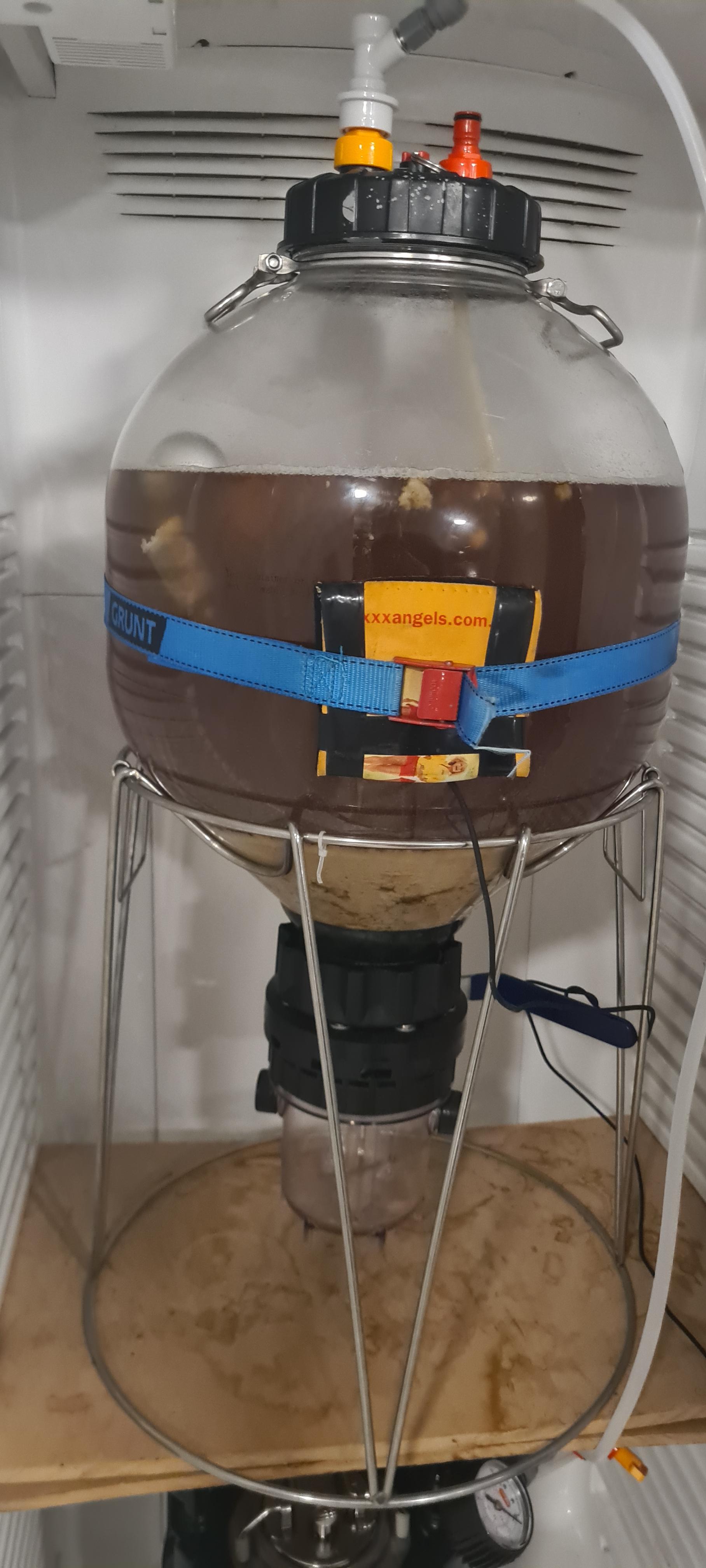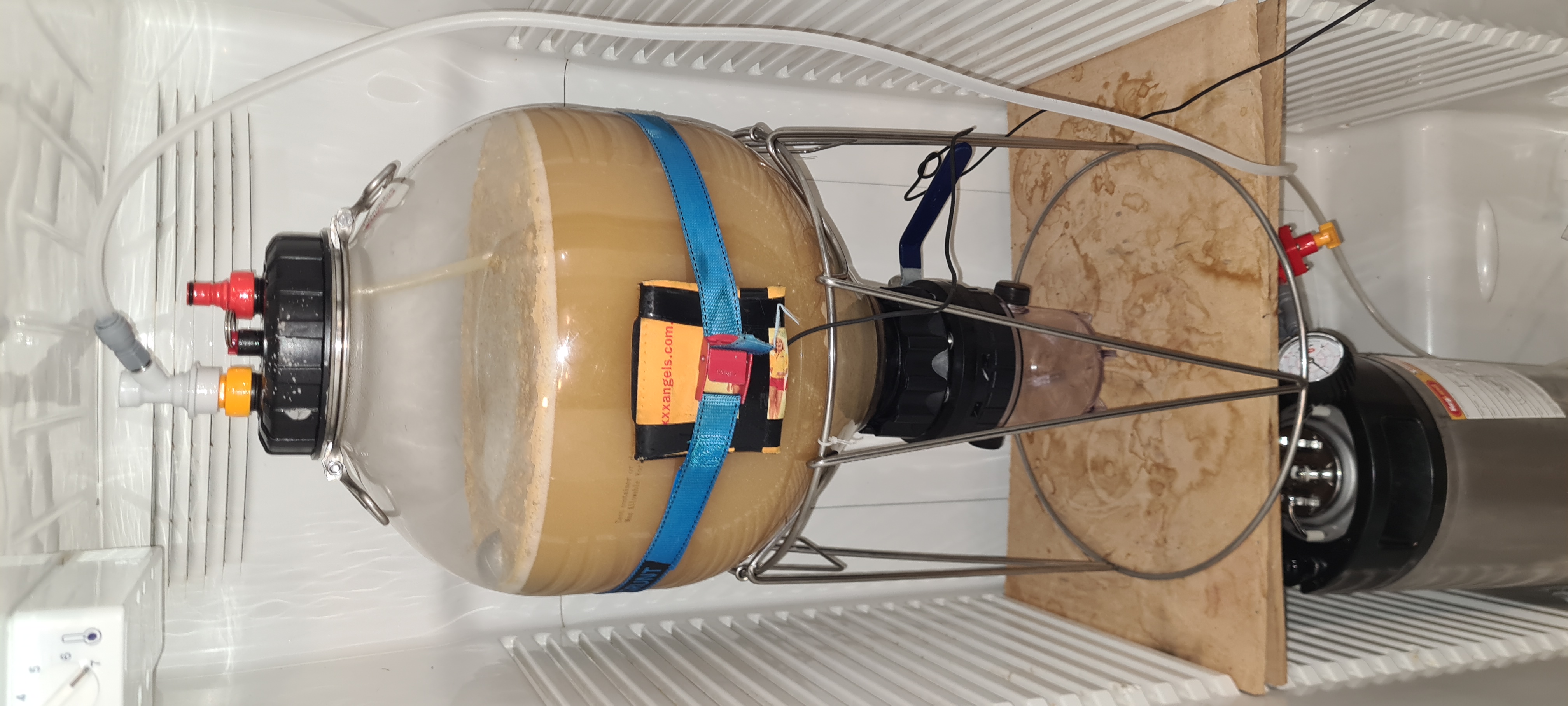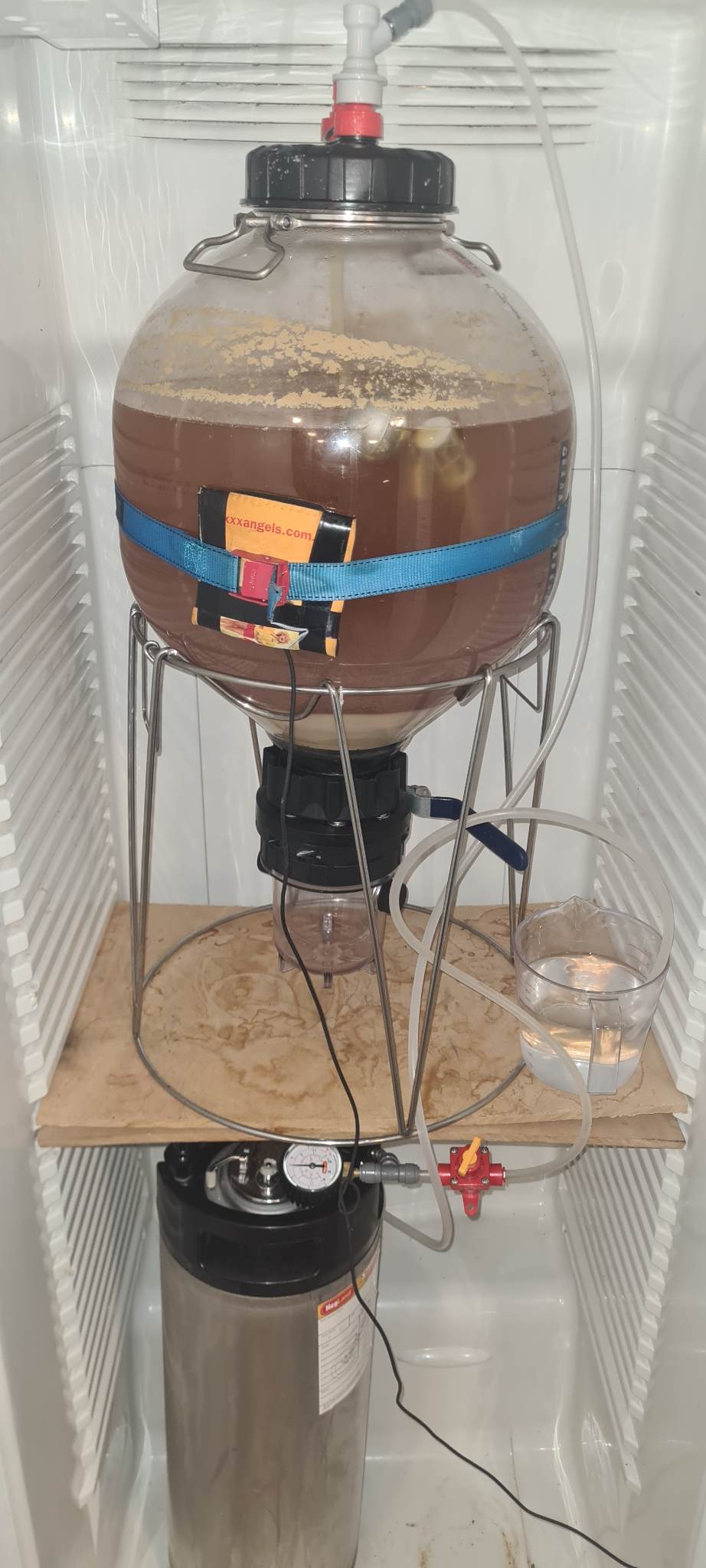In an effort to refine the Stone & Wood clone from this post, I’ve updated the recipe based on the results and inspiration from other sources (see link in notes). For the new batch, I’m adding some flaked wheat to add some more haze, and i’m lowering the percentage of ale malt. I’m also switching to american ale malt, in order to get a lighter colour. Finally, I’m increasing the dry hop to 100g and maintaining IBUs at around 22. I’m also experimenting with ascorbic acid (vitamin C) and sodium metabisulfite (SMB) during the dry hop, in an effort to reduce oxidation.
The updated recipe can be found here.
Stone & Wood Clone #3
American Wheat Beer
4.9% / 11.6 °P
Recipe by
Kraken Brewing
All Grain
BrewZilla 35L - March 2020 - GASH (copy)
72% efficiency
Batch Volume: 23 L
Boil Time: 60 min
Mash Water: 20 L
Sparge Water: 14.44 L @ 76 °C
Total Water: 34.44 L
Boil Volume: 30.08 L
Pre-Boil Gravity: 1.042
Vitals
Original Gravity: 1.047
Final Gravity: 1.010
IBU (Tinseth): 21
BU/GU: 0.45
Colour: 7.1 EBC
Mash
Strike Temp — 71.6 °C
Temperature — 67 °C — 60 min
Malts (4.85 kg)
2.5 kg (51.6%) — Gladfield Malt Gladfield American Ale Malt — Grain — 5 EBC
1.5 kg (30.9%) — Gladfield Wheat Malt — Grain — 4.2 EBC
500 g (10.3%) — Harraway’s New Zealand Gladfield Flaked Wheat (Harraway’s) — Grain — 3.2 EBC
350 g (7.2%) — Weyermann Carapils/Carafoam — Grain — 3.9 EBC
Hops (150 g)
5 g (8 IBU) — Galaxy 14% — Boil — 60 min
45 g (13 IBU) — Galaxy 14% — Aroma — 20 min hopstand @ 85 °C
100 g — Galaxy 14% — Dry Hop — 5 days
Hopstand at 85 °C
Miscs
10 g — Gypsum (CaSO4) — Mash
4 ml — Lactic Acid 88% — Mash
Yeast
1 pkg — Fermentis US-05 Safale American 80%
Fermentation
Primary — 18 °C — 10 days
Carbonation: 2.4 CO2-vol
Water Profile
94 Ca2+
15 Mg2+
44 Na+
73 Cl-
187 SO42-
117 HCO3-
Notes
08/01/2022
-Brewed this batch today - everything went pretty well in terms of the conversion efficiency, OG and wort volume. I tried mashing out for the first time, as this was something I’d never done before and had seen that it’s good practice to do. I did notice though that after sparging, the beer appeared very dark (given the light malts used). After some research, this is likely due to coagulating proteins in the mash, as this particular grain bill is fairly heavy in wheat. Also, mashing for longer tends to produce darker beers, as the wort has more contact time with the grains. Some people also mentioned that mash pH and calcium presence can affect the colour, but as I calculated the water and used all the correct additions, I don’t think this is the cause. After boiling, the colour returned and the brew looked normal, but after transferring into the fermenter (pre-yeast pitch) it looked very dark again. I added a whirfloc tablet during the boil, so this may also contribute to the protein coagulation and the darkened beer/extra clarity i’m noticing. Research says to just let it ride and see how it looks at the end, but if it’s still darker in appearance, I may need to do further research or tweak my process for lighter, hazier beers. Overall though, the brew went really well and was pretty efficient. I do need to trim the hose length on my immersion chiller though, as the long ass hoses are getting annoying.
What influences beer colour?
Reason beer is darker than expected


13/01/2022
-Yesterday was interesting. When attempting to find a leak in my fermenter, I stupidly took the safety collar off and applied too much pressure. It exploded, hit me in the face and now my eye socket is swollen. I definitely learnt my lesson, more about that here
Today, I added the dry hop charge of 100g Galaxy. I added 0.5g of sodium metabisulfite (SMB) and about 1.5g of ascorbic acid (vitamin c) with the hope to increase shelf life and reduce risk of oxidation.
I noticed, as the yeast activity died down, the beer is darkening again. I’m mostly thinking it’s just clarified a bit, and the colour will remain pale when in the glass in a smaller volume. For reference, here is what it’s looking like post-ferment:
